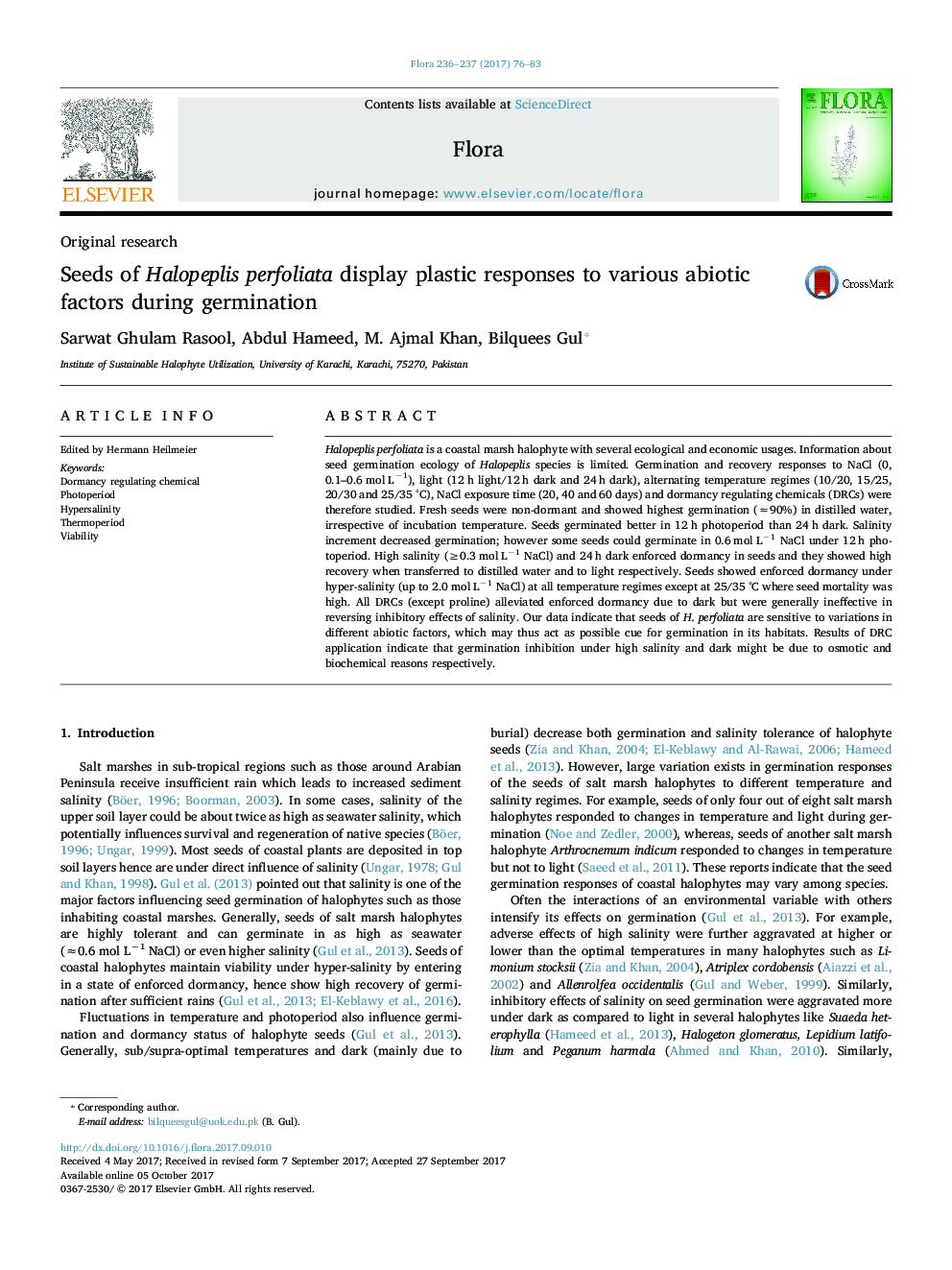| کد مقاله | کد نشریه | سال انتشار | مقاله انگلیسی | نسخه تمام متن |
|---|---|---|---|---|
| 5532292 | 1549923 | 2017 | 8 صفحه PDF | دانلود رایگان |

- Seed germination and recovery responses of H. perfoliata to some abiotic factors were studied.
- Seeds were non-dormant, photoblastic and germinated in up to 0.6 mol Lâ1 NaCl.
- Hyper-salinity with high temperature regime (25/35 °C) caused high seed mortality.
- Dormancy regulating compounds (except proline) alleviated dark enforced dormancy only.
Halopeplis perfoliata is a coastal marsh halophyte with several ecological and economic usages. Information about seed germination ecology of Halopeplis species is limited. Germination and recovery responses to NaCl (0, 0.1-0.6 mol Lâ1), light (12 h light/12 h dark and 24 h dark), alternating temperature regimes (10/20, 15/25, 20/30 and 25/35 °C), NaCl exposure time (20, 40 and 60 days) and dormancy regulating chemicals (DRCs) were therefore studied. Fresh seeds were non-dormant and showed highest germination (â90%) in distilled water, irrespective of incubation temperature. Seeds germinated better in 12 h photoperiod than 24 h dark. Salinity increment decreased germination; however some seeds could germinate in 0.6 mol Lâ1 NaCl under 12 h photoperiod. High salinity (â¥0.3 mol Lâ1 NaCl) and 24 h dark enforced dormancy in seeds and they showed high recovery when transferred to distilled water and to light respectively. Seeds showed enforced dormancy under hyper-salinity (up to 2.0 mol Lâ1 NaCl) at all temperature regimes except at 25/35 °C where seed mortality was high. All DRCs (except proline) alleviated enforced dormancy due to dark but were generally ineffective in reversing inhibitory effects of salinity. Our data indicate that seeds of H. perfoliata are sensitive to variations in different abiotic factors, which may thus act as possible cue for germination in its habitats. Results of DRC application indicate that germination inhibition under high salinity and dark might be due to osmotic and biochemical reasons respectively.
114
Journal: Flora - Volumes 236â237, November 2017, Pages 76-83